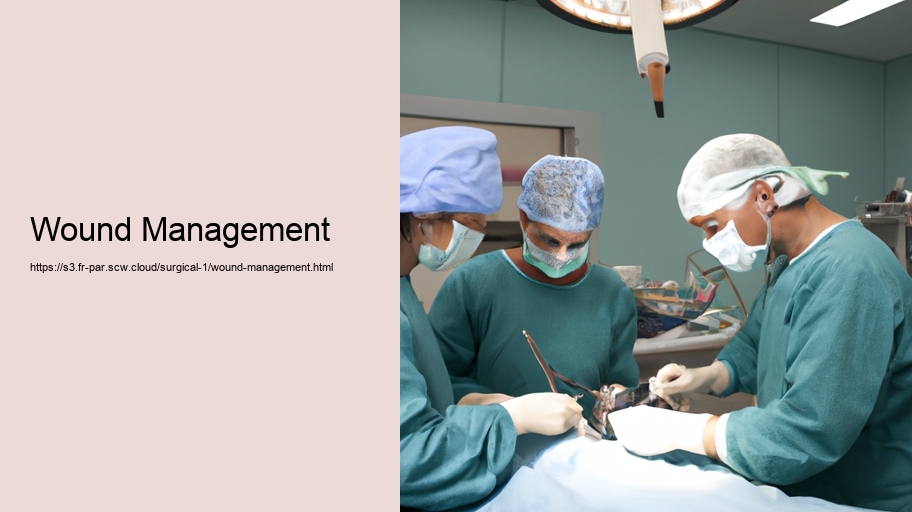Wound Management: The Art and Science of Healing
Wound management is an intricate field that blends the art of caring with the science of healing to restore the integrity of damaged tissue. Whether due to injury, surgery, or chronic conditions, wounds are disruptions to the skin's protective barrier that require meticulous attention to promote proper healing and prevent complications. This essay explores the principles, techniques, and challenges of effective wound management.
At the core of wound management is an understanding of the wound healing process, which comprises four distinct but overlapping phases: hemostasis, inflammation, proliferation, and remodeling. The hemostasis phase occurs immediately after injury, as the body works to stop bleeding through clot formation. Next, inflammation sets in, characterized by redness, heat, and swelling, as the immune system clears debris and bacteria. Proliferation follows, where new tissue is built, and finally, remodeling, which can last for years, involves the strengthening and maturation of the new tissue.
Effective wound management hinges on proper assessment. Health care professionals must consider factors such as the wound's location, size, depth, and the presence of infection or necrotic tissue. They also look at patient-specific elements such as underlying health conditions, nutritional status, and ability to adhere to treatment plans. A thorough assessment guides the choice of wound care strategies and products.
One critical aspect of wound management is maintaining a moist wound environment, which has been shown to facilitate cell migration and proliferation, thereby speeding up the healing process. This is achieved through the use of dressings that keep the wound bed hydrated but also allow excess moisture to evaporate. There are many types of dressings available, including hydrocolloids, alginates, foams, and hydrogels, each suited to different types of wounds.
Infection control is another cornerstone of wound management. Wounds can be breeding grounds for bacteria, leading to infection that can delay healing and cause systemic issues. Antiseptic solutions and antibiotics may be used to treat and prevent infection, but they must be used judiciously to avoid antibiotic resistance. Debridement, the process of removing dead or infected tissue, is also a vital procedure to promote a clean wound bed that can support new tissue growth.
Chronic wounds, such as diabetic ulcers or pressure ulcers, present unique challenges and require specialized management strategies. These wounds often have impaired healing due to the underlying disease process. Comprehensive care for such wounds might include managing blood glucose levels in diabetics or implementing pressure-relieving measures to prevent bedsores.
Advancements in wound care technology have introduced innovative therapies like negative pressure wound therapy, which uses suction to promote healing, and bioengineered tissue products, which provide a temporary scaffold for cell growth. Additionally, the emergence of telemedicine has made it possible to monitor wound healing remotely, allowing for timely interventions and expert consultations.
A human-centric approach to wound management is also of paramount importance. Healing is not solely a physical process; psychological and emotional support can greatly influence recovery. Educating patients about their wound care, involving them in their treatment decisions, and providing reassurance can enhance adherence to care plans and improve outcomes.
In conclusion, wound management is a dynamic and multifaceted field that requires a blend of knowledge, skill, and compassion. By understanding the science of wound healing, meticulously assessing each wound, employing appropriate care techniques, and embracing new technologies, healthcare professionals can achieve the ultimate goal of wound management: to repair the body's largest organ, the skin, and restore its full function and appearance. It is a journey that underscores the resilience of the human body and the dedication of those who care for it.
